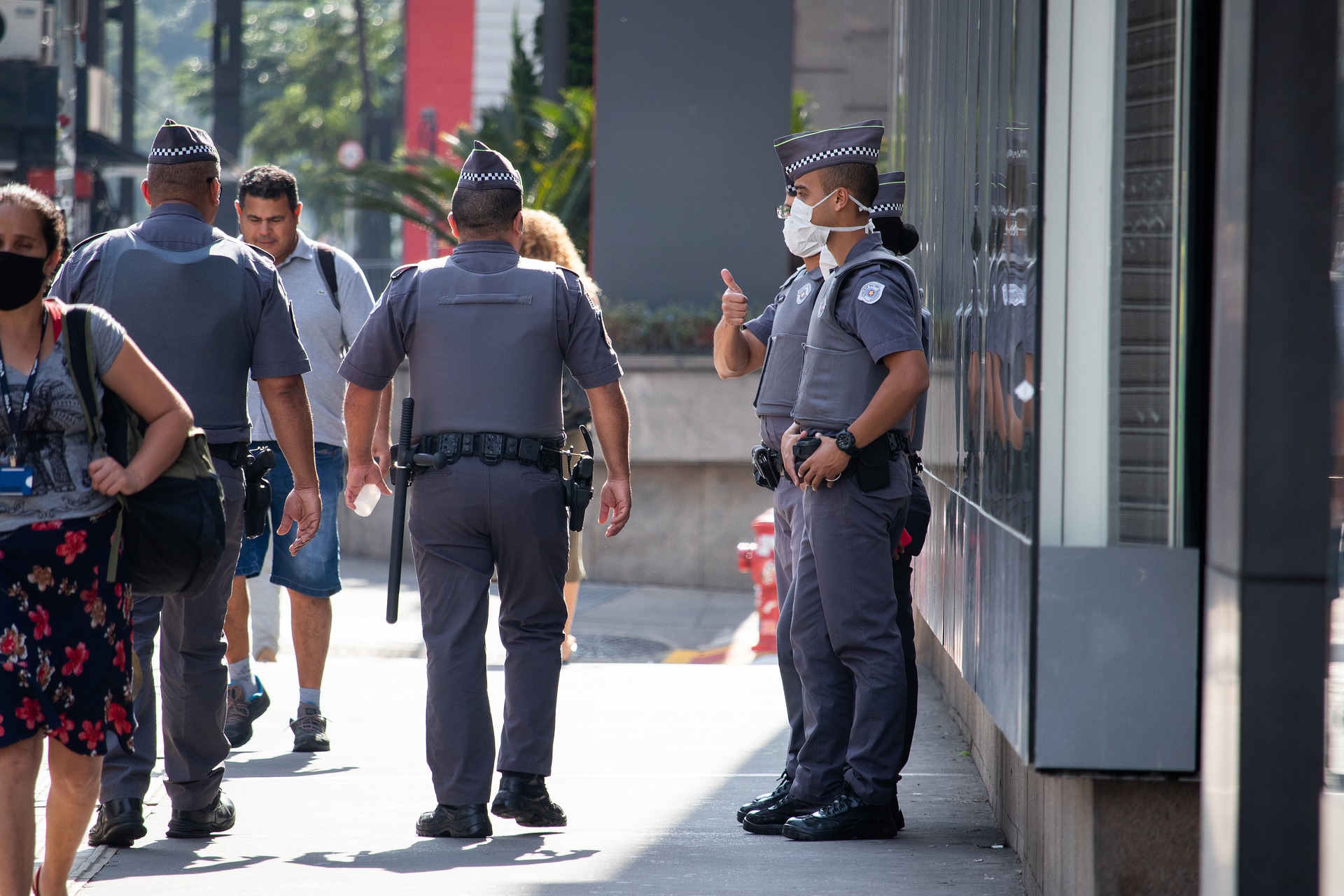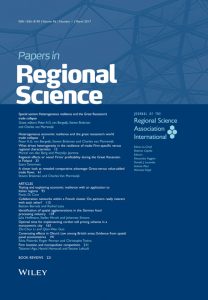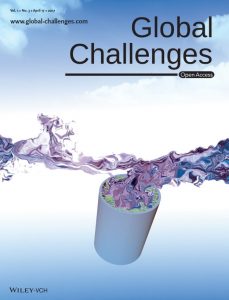What happened to Crime during the COVID-19 Pandemic?
by Jullianne Regalado, Anastasiia Timmer & Ali Jawaid · Published · Updated
 Since the announcement of the COVID-19 pandemic in 2020, there has been a drastic change in people’s daily lives with emerging news reports suggesting that criminal and violent behaviors have also been affected.[i], [ii] Specifically, in the U.S. and across other countries, different types of crime (i.e., theft, robbery, assault) were found to decline since the onset of containment measures and lockdown orders.[iii], [iv] However, studies found increases in other crimes such as non-residential burglary and motor vehicle theft.[v], [vi] Importantly, scholars have also noted increases in cybercrime and victimization via technology.[vii], [viii]
Since the announcement of the COVID-19 pandemic in 2020, there has been a drastic change in people’s daily lives with emerging news reports suggesting that criminal and violent behaviors have also been affected.[i], [ii] Specifically, in the U.S. and across other countries, different types of crime (i.e., theft, robbery, assault) were found to decline since the onset of containment measures and lockdown orders.[iii], [iv] However, studies found increases in other crimes such as non-residential burglary and motor vehicle theft.[v], [vi] Importantly, scholars have also noted increases in cybercrime and victimization via technology.[vii], [viii]
To help explain these trends, we considered several criminological theories. The Routine Activities Theory in criminology states that crime is likely to occur when there is a convergence of three components in time and space: (1) a motivated offender, (2) a suitable target, and (3) an absence of guardianship (e.g., police).[ix] During the pandemic, different places of large gatherings such as shopping malls, bars, and work offices had temporarily shut down for various lengths of time to contain the spread of the virus. This resulted in limited social interaction between motivated offenders and vulnerable targets further reducing opportunities for certain crimes, such as theft and assault.[x] On the other hand, as there have also been fewer individuals (i.e., capable guardians) to deter potential offenders, this can explain why certain crimes, such as non-residential burglary and motor vehicle theft, have increased[xi], [xii]
The COVID-19 pandemic is also an extremely stressful condition[xiii] as many people experienced loss of employment, death of their loved ones, social isolation, concerns about the vaccine, and many other pandemic-related issues. The General Strain Theory argues that engagement in criminal activities can occur when individuals experience different types of strain, such as the failure to achieve positively valued goals, the presentation of negative stimuli, or the removal of positive stimuli.[xiv] Consistent with this theory, the accumulation of various pandemic-related stressors was found to be related to the engagement in deviance and violence (i.e., parental neglect, cyberbullying, gun violence).[xv], [xvi], [xvii] Importantly, in the absence of appropriate and legitimate coping strategies, individuals are even more likely turn to violence as ways to manage their stress.[xviii]
Notably, however, the recent crime trends have been largely inconsistent and vary across regions, time periods, and contexts, which brings into question the generalizability of the existent criminological theories. The consequences of the global health crisis have not been equally experienced among populations, as existing issues, such as institutional biases and structural inequities in the access to healthcare, housing, education, and employment, affect certain groups more than others. [xix] In fact, we observed the disproportionate impact of violence on Black communities, increase in hate crimes towards the Asian American Pacific Islander (AAPI) community, the intensification of intimate partner violence, and the differences in crime rates cross-nationally (see our article for more detail). Ultimately, these few examples highlight the many ways the COVID-19 pandemic has intensified vulnerabilities of people, which calls for a more nuanced understanding of sources and consequences of crime and violence across groups and social contexts.
Given the novelty of the COVID-19 pandemic, we stress the importance for future studies to provide a more comprehensive explanation of causes of crime during and post-pandemic. First, we need to integrate various social scientific frameworks to better describe the patterns of crime and victimization. Further, researchers should consider the unique experiences of crime and violence among various vulnerable groups including children, immigrants, incarcerated individuals, and others. Finally, we should draw on the social, cultural, and political backgrounds of each country to better understand how crime and justice operate differently across settings and groups. Overall, these unprecedented times warrant the development of more systematic, multi-disciplinary approaches to better address and prevent contemporary crime and violence.
[i] Taub, A. (2020, April 6). A new covid-19 crisis: Domestic abuse rises worldwide. The New York Times. https://www.nytimes.com/2020/04/06/world/coronavirus-domestic-violence.html
[ii] Rector, K. (2021, May 4). Startling surge in L.A. bloodshed as COVID-19 fades: ‘Too many guns in too many hands.’ Los Angeles Times. https://www.latimes.com/california/story/2021-05-04/gun-violence-la-surge-los-angeles-pandemic
[iii] Abrams, D. S. (2021). COVID and crime: An early empirical look. Journal of public economics, 194, 104344. https://doi.org/10.1016/j.jpubeco.2020.104344
[iv] Balmori de la Miyar, J. R, Hoehn-Velasco, L., & Silverio-Murillo, A. (2021). Druglords don’t stay at home: COVID-19 pandemic and crime patterns in Mexico City. Journal of Criminal Justice, 72, 101745. https://doi.org/10.1016/j.jcrimjus.2020.101745
[v] Ashby, M. P. J. (2020). Initial evidence on the relationship between the coronavirus pandemic and crime in the United States. Crime Science, 9(1), 6. https://doi.org/10.1186/s40163-020-00117-6
[vi] Hodgkinson, T., & Andresen, M. A. (2020). Show me a man or a woman alone and I’ll show you a saint: Changes in the frequency of criminal incidents during the COVID-19 pandemic. Journal of Criminal Justice, 69, 101706. https://doi.org/10.1016/j.jcrimjus.2020.101706
[vii] Collier, B. (2020, July 28). Boredom, routine activities, and cybercrime during the pandemic [Briefing Paper]. University of Cambridge https://www.cambridgecybercrime.uk/COVID/COVIDbriefing-4.pdf
[viii] Monteith, S., Bauer, M., Alda, M., Geddes, J., Whybrow, P. C., & Glenn, T. (2021). Increasing cybercrime since the pandemic: Concerns for psychiatry. Current Psychiatry Reports, 23(4), 18. https://doi.org/10.1007/s11920-021-01228-w
[ix] Cohen, L. E., & Felson, M. (1979). Social change and crime rate trends: A routine activity approach. American Sociological Review, 588-608.
[x] Campedelli, G. M., Favarin, S., Aziani, A., & Piquero, A. R. (2020b). Disentangling community-level changes in crime trends during the COVID-19 pandemic in Chicago. Crime Science, 9(1), 21. https://doi.org/10.1186/s40163-020-00131-8
[xi] Ashby, M. P. J. (2020). Initial evidence on the relationship between the coronavirus pandemic and crime in the United States. Crime Science, 9(1), 6. https://doi.org/10.1186/s40163-020-00117-6
[xii] Hodgkinson, T., & Andresen, M. A. (2020). Show me a man or a woman alone and I’ll show you a saint: Changes in the frequency of criminal incidents during the COVID-19 pandemic. Journal of Criminal Justice, 69, 101706. https://doi.org/10.1016/j.jcrimjus.2020.101706
[xiii] Lyons, M., & Brewer, G. (2021). Experiences of intimate partner violence during lockdown and the COVID-19 pandemic. Journal of Family Violence. https://doi.org/10.1007/s10896-021-00260-x
[xiv] Agnew, R. (1992). Foundation for a General Strain Theory of Crime and Delinquency. Criminology, 30(1), 47-88.
[xv] Connell, C. M., & Strambler, M. J. (2021). Experiences With COVID-19 Stressors and Parents’ Use of Neglectful, Harsh, and Positive Parenting Practices in the Northeastern United States. Child Maltreatment, 1-12. https://doi.org/10.1177/10775595211006465
[xvi] Barlett, C. P., Rinker, A., & Roth, B. (2021). Cyberbullying perpetration in the COVID-19 era: An application of general strain theory. The Journal of Social Psychology, 1-11. https://doi.org/10.1080/00224545.2021.1883503
[xvii] Kim, D. & Phillips, S. W. (2021). When COVID-19 and guns meet: A rise in shootings. Journal of Criminal Justice, 73, 101783. https://doi.org/10.1016/j.jcrimjus.2021.101783
[xviii] Agnew, R. (2006). Pressured Into crime: An overview of general strain theory. Los Angeles, CA: Roxbury Publishing.
[xix] Muhammad, F. L. (2020, May 7). The pandemic’s impact on racial inequity and violence can’t be ignored. The Trace. https://www.thetrace.org/2020/05/coronavirus-racial-inequity-and-violence-cant-be-ignored/






1520-6688/asset/Capture.jpg?v=1&s=b5076c49a7d1c5f1b9cf0dd9cd292394a3be81cc)